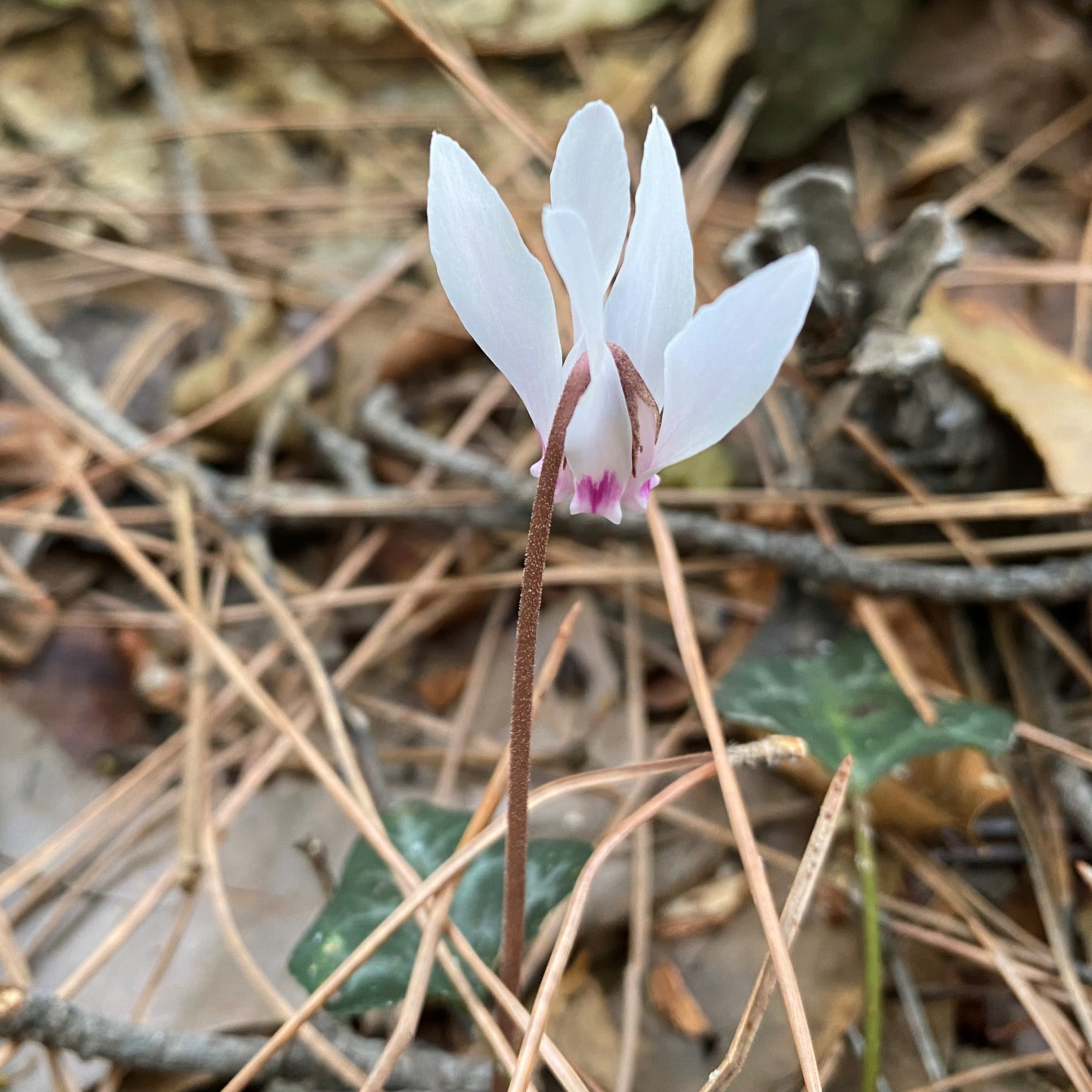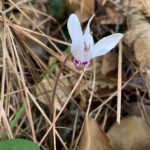Κούκουνος, Κοκόνιν, Κυκλάμινο το κυπριακό
Etymology of Cyclamen cyprium: The name of the genus, "Cyclamen", derives from the Ancient Greek word "κυκλάμινος" [kyklaminos], which comes from "κύκλος" [kyklos], meaning "circle", thus κυκλάμινος means "circular", and refers either to the round tuber or possibly the circular twisting of the fruiting peduncle (the flower stalk circles upon itself as the fruit develops). The epithet "cyprium" refers to Cyprus, as it is an exclusively Cypriot endemic plant.
Three kinds of the Cyclamen genus are considered to exist in the Cypriot nature, of which the one grows exclusively in occupied Cyprus in the Morfou region.
Cyclamen cyprium is an indigenous, endemic plant, that can be found in the Akamas, Troodos and Kyrenia regions. This cyclamen is locally common. Some places where it appears include the Kritou Terra waterfalls, Spilia village, Polystypos village, Platys river, the Elia Venetian bridge, Saittas locality by the stream and Platania locality. It grows at an altitude of up to 1075 metres. Cyclamen cyprium's flowering time is from October until January.
How to identify Cyclamen cyprium:
- Its flowers appear in autumn, usually in advance of the leaves (contrary to Cyclamen persicum) and they are strongly sweet-scented.
- It has unique leaves.
- The base of the corolla-lobes is blotched, with conspicuous auricles; the pedicels are coiling after anthesis from the apex downward in the fruit.
- The calyx-lobes are narrowly subulate-acuminate.


